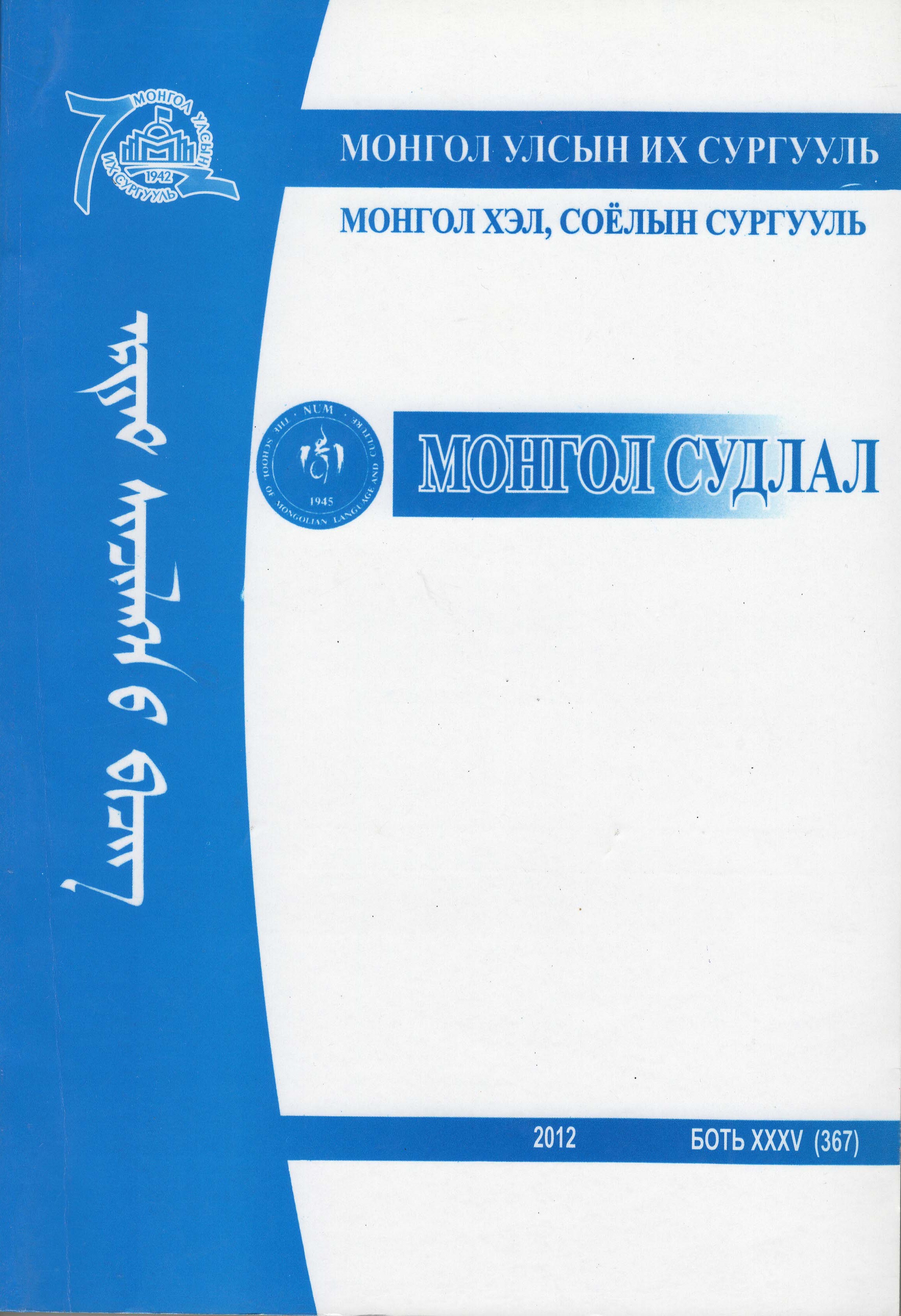Манжийн хаад туйлд хүрсэн нь
The Manchu emperor's rise through the rank
Abstract
This paper is related to the noble titles of Manchus. The Manchus' relations with their Mongol allies were crucial for strengthening their state from its early years. Nurhaci, the chieftain of a Jurchen tribe in Jianzhou, received the title Secen къпаыеп qan in 1606 instead of his clan title Sure beile (wise prince). By 1616, he had sufficiently consolidated himself in Jianzhou to proclaim himself as Khan of the Great Jin as a successor from previous Jurchen dynasty. Therefore, many works on Qing studies mention that this action raised his claims from a clan leader to the level of a Central Eurasian Khan. However, these works are lacking Manchu-Mongolian comparative studies on this matter, including titles given not only to the imperial man but women as well.
In the reign of Kangxi (1691), the court confirmed the titles for Khalkha princes. At that time, some titles such as qungtayiji, jinong, byijen, dayicing were lost from the Qing dynasty's hierarchal system but qan, wang, tayiji were preserved. The title qan (Khan) meant an ‘Emperor of Mongol State.' In connection with this it is hard to understand why the Manchus allowed keeping the title qan for the Mongols. The reason of preserving a qan title for the Mongols and Mongolian influence on Manchus’ titles are discussed within the frame of this paper.
The main focus is based on two points: title to claim the Mandate of Heaven (heile, han, huangdi) and titles to claim for Imperial family members. As for the first one, a change in the meaning of qan title is studied. Nurhaci's imperial ambitious program that was started by the acquisition of the Mongolian qan title can be justified. He and his successor Hongtaiji used a qan title to connect themselves to Chinggis Khan, and to win a prospect to become a ‘Khan.’ Later, they claimed to be a Huangdi, Emperor of Chinese World: a dream which was fulfilled after their conquest of Beijing. Actually, this title served them as an ‘Emperor of the World.’
The titles for imperial family members are considered in the second part. The main body of this discussion is related to the status of imperial women. They were divided to eight ranks, the top was Huanghou. The highly stratified imperial harem seems to have a Han Chinese structure that Manchu rulers adopted in the course of the seventeenth century. However, recent works strongly argue against the sinicization of the Manchus and put it forward as Manchus’ own nature or Manchu identity. In this viewpoint, the use of Chinese titles (ujin and fei) for imperial women in both early Manchu and Mongolian cases are discussed, w'hich gives a chance of summing that titles were not alien or new things at that time; they were already transferred into common Manchu-Mongolian-Chinese multi-cultural background.
To conclude, the Manchu Emperor and his family members had the titles and ranks of Chinese origin, but they did not directly mirror the system. Moreover, the rank system was used as a mask. In comparison with early Manchu and Mongol titles, the ‘masking’ idea was not only appeared as Chinese character, but also it was an art of Manchu images that contained along with Manchu also Mongolian elements.





